Australia So Much to See


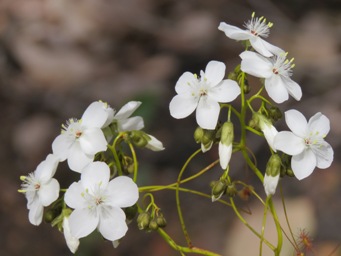
Insectivorous, climber, delicate white flowers with five petals in a small cluster at top of climber. Style consists straight filaments in contrast to Drosera macrantha. Reddish colour on ovaries. No hairs evident on stems and buds which separates the species from Drosera macrantha. Circular lamina.
Bridgetown, South West Region, Western Australia and found through the South West, lower Great Southern, and Perth regions, extending north to Geraldton in coastal areas.
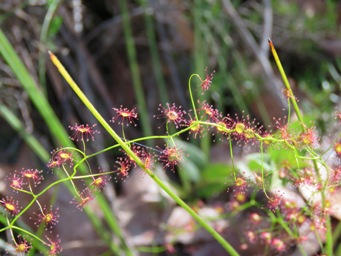
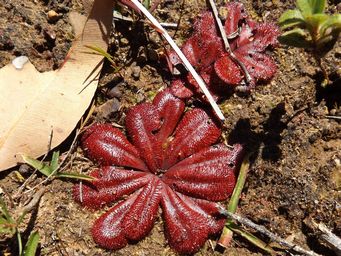
Drosera rosulata. This is similar to Drosera bulbosa, Red-leaved Sundew, but lacks the raised mid-rib evident in the latter,
with the leaves slightly folded upwards from the depressed centre rib.
A small flat slightly succulent and hair covered
plant, which produces delicate white five petalled flowers with one flower per stem. Anthers appear orange or pink when
first open due to the covering of the pollen which bursts revealing yellow pollen, then anthers appear brown after the pollen has
been released. Foliage turns red seasonally.
April May
Bridgetown, South West Region, Western Australia, and found through
the South West and Perth regions, with a recording from the Mid West.
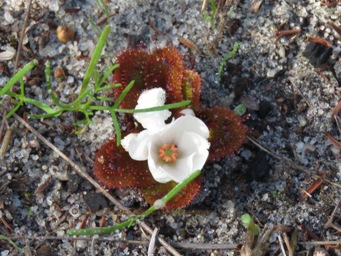

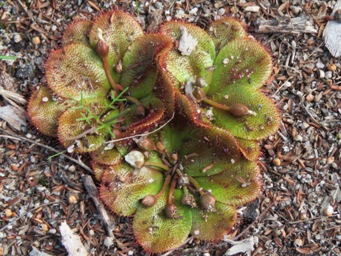
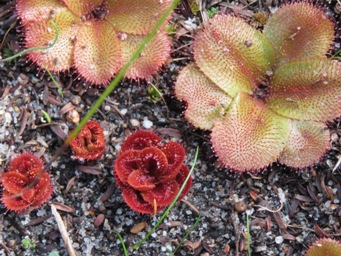

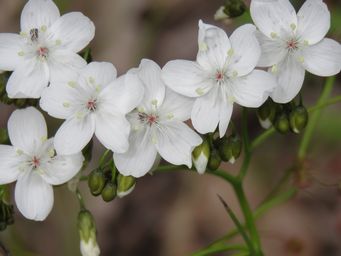
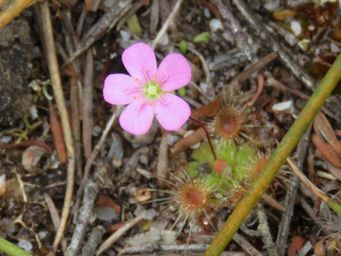
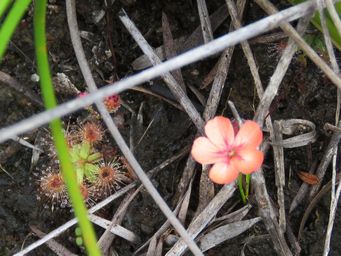
Drosera pulchella, Pretty Sundew
A tiny rosetted Sundew, with flowers that can be white, shades of pink or shades of orange. Seen here in pastel pink, and in an apricot orange. Flowers have dark markings radiating from the centre at the base of the
petals. Style consists of five parts which each point outwards between the five stamens, with orange anthers. Rosette consists
of a circle of round red tinged lamina, each on a long wide flat green petiole (leave stalk) almost as wide as the lamina.
December
Northcliffe,
in the South West region, Western Australia, and found in coastal or near to the coast between Gingin and Albany, extending a little
way inland as far as York from the west and Jerramungup from the south. Favours wet or winter wets sands
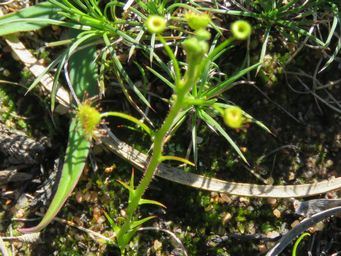
Drosera stricticaulis, Erect Sundew
This is a short stiff stemmed Sundew, which was not yet flowering when I photographed it. It flowers from July to October with rich pastel pink flowers in a cluster at the top of this freestanding Sundew. Divided style
filaments are sparse, and the yellow tipped stamens stand upright. Circular lamina are on long petioles up the main stem. Stems and buds are hairy.
Not flowering when seen in August
Totadgin Rock, Merredin, in the Wheatbelt region of Western Australia. Found mostly in the Wheatbelt, from Wongan Hills to Jingalup south of Kojonup. Favours water courses and damps areas around
granite outcrops.
